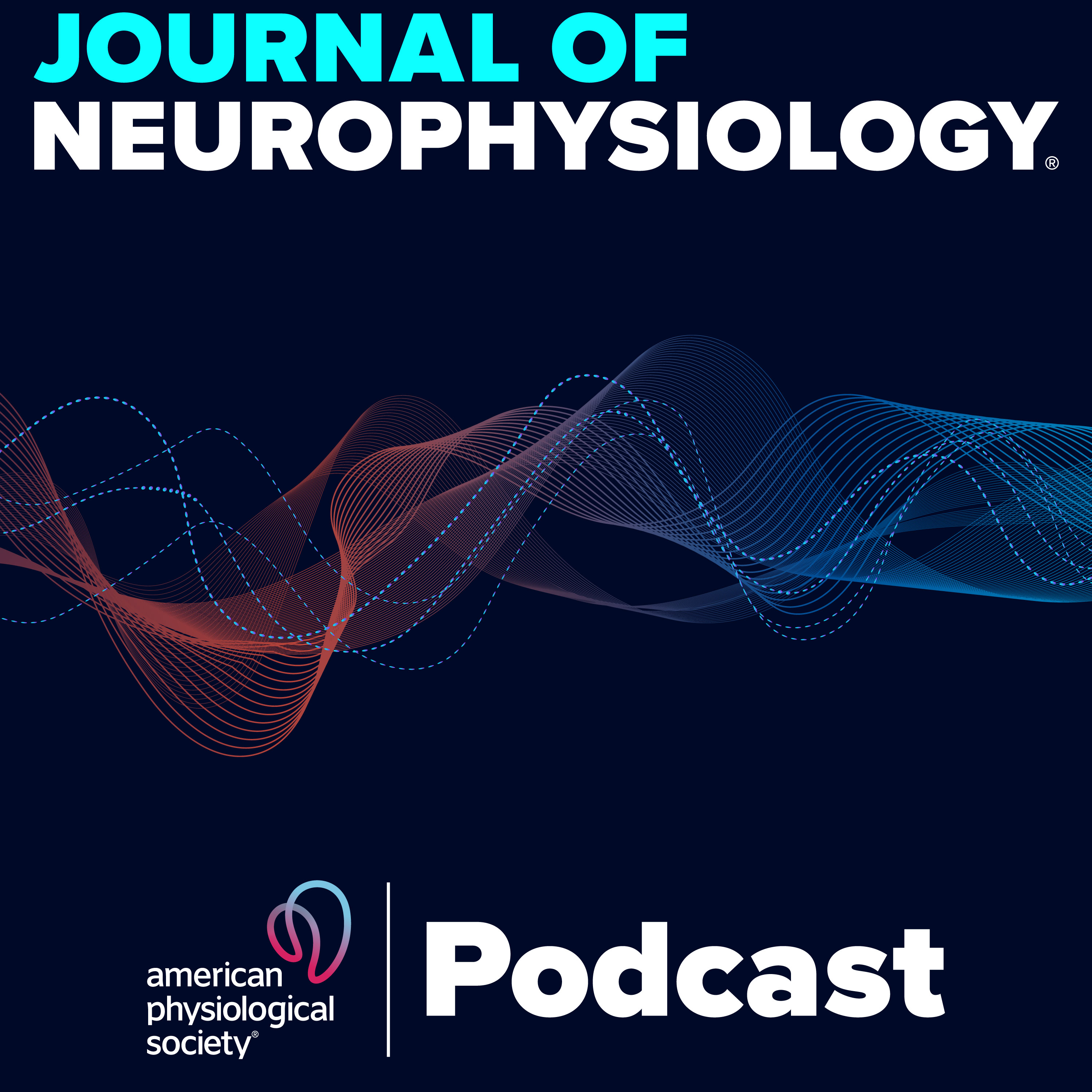Episodes
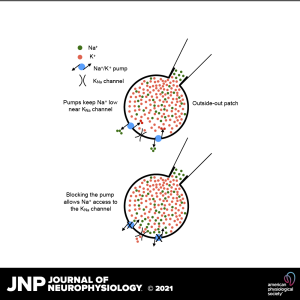
Friday Aug 20, 2021
Sodium sensitivity of KNa channels in mouse CA1 neurons
Friday Aug 20, 2021
Friday Aug 20, 2021
The Journal of Neurophysiology would like to dedicate the following podcast to Dr. Richard Gray. Dr. Gray passed away at the age of 68 on September 4, 2021.
How are potassium channels regulated? How ubiquitous are sodium-dependent potassium channels? In this podcast Editor-in-Chief Professor Nino Ramirez and authors Drs. Richard Gray and Daniel Johnston discuss their manuscript titled “Sodium sensitivity of KNa channels in mouse CA1 neurons.”. In this podcast, the authors discuss KNa channels in mouse hippocampal CA1 neurons. Excised inside-out patches showed the channels to be prevalent and active in most patches. Cell-attached recordings from intact neurons, however, showed little channel activity. Increasing cytoplasmic sodium in intact cells showed a small effect on channel activity compared to that seen in inside-out excised patches. Blockade of the Na+/K+ pump with ouabain, however, restored the activity of the channels to that seen in inside-out patches. The results emphasize the power of the Na+/K+ pump in maintaining a normally low concentration of intracellular Na+.
Sodium sensitivity of KNa channels in mouse CA1 neurons
Volume 125Issue 5 May 2021 DOI: 10.1152/jn.00064.2021
#neuroscience #JNPPodcastSeries
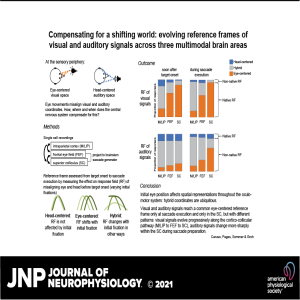
Monday Jul 12, 2021
Monday Jul 12, 2021
Auditory and visual information are processed differently by the brain, especially when it comes to space. In vision, the retina senses the locations of images with respect to where the eyes are pointing. In hearing, the cues our brains use to localize sound tell us where the sound is positioned with respect to the head and ears. How then do we perceive space as unified? In particular, how do our brains compensate for eye movements that constantly shift the relationship of the visual and auditory scenes?
In this podcast Editor in Chief Nino Ramirez and author Jennifer Groh discuss the manuscript titled “Compensating for a shifting world: evolving reference frames of visual and auditory signals across three multimodal brain areas” by Caruso et al. Models for visual-auditory integration posit that visual signals are eye-centered throughout the brain, while auditory signals are converted from head-centered to eye-centered coordinates. In the manuscript they show instead that both modalities largely employ hybrid reference frames: neither fully head- nor eye-centered. Across three hubs of the oculomotor network (intraparietal cortex, frontal eye field, and superior colliculus) visual and auditory signals evolve from hybrid to a common eye-centered format via different dynamics across brain areas and time.
Valeria C. Caruso, Daniel S. Pages, Marc A. Sommer, and Jennifer M. Groh
#neuroscience @jmgrohneuro
Check out the article here: https://doi.org/10.1152/jn.00385.2020
Join APS today-https://www.physiology.org/community/aps-membership
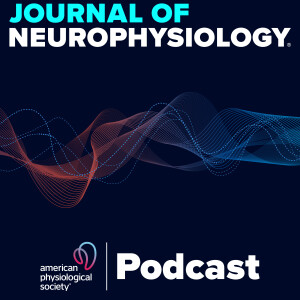
Friday Jun 18, 2021
The Neurocene-Exploring Developments in the Field of Neuroscience
Friday Jun 18, 2021
Friday Jun 18, 2021
In this podcast Editor in Chief Nino Ramirez and Associate Editor Prof. John Krakauer discuss JNP’s new manuscript type the Neurocene. The Neurocene is a narrative that explores accelerating developments in the field of neuroscience, placing them in their historical and present context. Authors should provide a personalized and thoughtful viewpoint of a topic that does not seek to either provide definitive proof or a final conclusion.
This long-form scientific essay may focus on cultural currents, books and biography, philosophy and the history of science, and on puzzles, paradoxes, and controversies within the field of neuroscience itself. The article is meant to be inclusive, and the only stipulation is that the essay be written with longevity in mind - they should be read with equal pleasure and interest decades after their publication date.
For more information on the Journal of Neurophysiology's manuscript types click here: https://journals.physiology.org/jn/article-types
#neuroscience
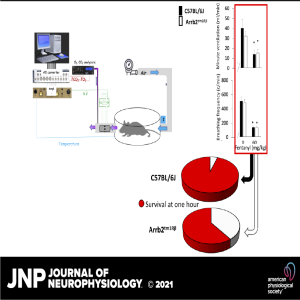
Friday Jun 11, 2021
Friday Jun 11, 2021
In this podcast Editor in Chief Nino Ramirez and senior author, Professor Haouzi of Pennsylvania State University discuss the paper titled “Respiratory effects of low and high doses of fentanyl in control and β-arrestin 2 deficient mice”. When life-threatening doses of fentanyl are used in mice, the beta-arrestin2 pathway appears to play a critical role in the recovery from an opioid overdose. This observation calls into question the use of G protein-biased μ-opioid receptor agonists, as a strategy for safer opioid analgesic drugs.
Check out the article here: https://journals.physiology.org/doi/abs/10.1152/jn.00711.2020
#neuroscience
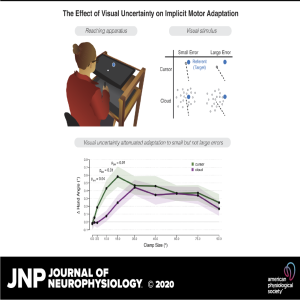
Wednesday Jun 02, 2021
The effect of visual uncertainty on implicit motor adaptation
Wednesday Jun 02, 2021
Wednesday Jun 02, 2021
What is sensorimotor adaptation? Why do the authors use this term rather than motor learning? What are some of the key features of sensorimotor adaptation, and in particular, why is the focus here on error-based learning? How do the author's results change the way we think about how visual uncertainty impacts adaptation?
Out of the University of California, Professor Richard Ivry and JT Tsay discuss their recently published manuscript titled “The effect of visual uncertainty on implicit motor adaptation.” Sensorimotor adaptation is influenced by both the size and variance of error information. In the present study, we varied visual uncertainty and error size in a factorial manner and evaluated their joint effect on adaptation, using a feedback method that avoids inherent limitations with standard visuomotor tasks. Uncertainty attenuated adaptation but only when the error was small. This striking interaction highlights a novel constraint for models of sensorimotor adaptation.
Check out the article here: https://journals.physiology.org/doi/full/10.1152/jn.00493.2020
#neuroscience #JNPPodcastSeries

Tuesday May 25, 2021
Music-selective neural populations arise without musical training
Tuesday May 25, 2021
Tuesday May 25, 2021
What features of a sound does the brain perceive as a pitch? What is the role of rhythm in music? In this podcast Dr. Nancy Kanwisher ( Massachusetts Institute of Technology) and PhD candidate Dana Boebinger (Harvard University) discuss how music-selective neural populations are clearly present in people without musical training, demonstrating that they are a fundamental and widespread property of the human brain. The authors then discuss how music-selective neural populations respond strongly to music from unfamiliar genres as well as music with rhythm but little pitch information, suggesting that they are broadly responsive to music as a whole.
Read the article here: https://doi.org/10.1152/jn.00588.2020
#neuroscience

Friday May 21, 2021
Friday May 21, 2021
In this podcast Editor in Chief Nino Ramirez discusses JNP’s new article type Neurovision with Prof. John Krakauer of Johns Hopkins University and Prof. Reza Shadmehr of Johns Hopkins University. Neurovision articles aim to move science forward and point out bottlenecks in our understanding of the field. They resemble review articles, but with the inclusion of original data. The presence of new original data is meant to inspire new experiments and ideas. These articles will serve as blueprints, and guides for future research. JNP is inviting leading neuroscientists to write articles in this format, which will serve as templates moving forward.
For more information on the Journal of Neurophysiology's manuscript types click here: https://journals.physiology.org/jn/article-types
#neuroscience
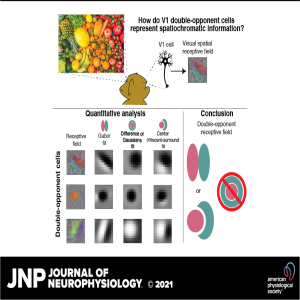
Friday May 07, 2021
Spatial receptive field structure of double-opponent cells in macaque V1
Friday May 07, 2021
Friday May 07, 2021
In this podcast Dr. Greg Horwitz of the University of Washington discuses double-opponent cells in macaque area V1, a class of neurons that respond to spatial chromatic contrast in visual scenes. What information they carry is debated because their receptive field organization has not been characterized thoroughly. Using white noise analysis and statistical model comparisons, De and Horwitz show that many double-opponent receptive fields can be captured by either a Gabor model or a center-with-an-asymmetric-surround model but not by a difference-of-Gaussians model.
Read the article here:
https://journals.physiology.org/doi/abs/10.1152/jn.00547.2020
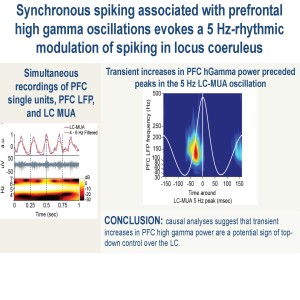
Friday Mar 12, 2021
Friday Mar 12, 2021
In this episode Editor in Chief Prof. Ramirez is joined by Prof Stroh of the University of Mainz and Prof. Totah of the University of Helsinki to discus the manuscript titled "Synchronous spiking associated with prefrontal high gamma oscillations evokes a 5 Hz-rhythmic modulation of spiking in locus coeruleus." Prof. Nelson Totah highlights the main conceptual advances in their paper and talks about what motivated them to focus on top down control exerted by PFC on LC. The prefrontal cortex (PFC) is thought to control activity in the noradrenergic locus coeruleus (LC). Prior anatomical and prefrontal stimulation studies demonstrated the potential for PFC-LC interactions; however, it is unknown what types of PFC activity affect the LC. In this podcast, the author talks about the transient increases in PFC high gamma power and associated changes in PFC unit-pair synchrony that are a potential sign of top-down control over the LC.
Nelson K. Totah, Nikos K. Logothetis, Oxana Eschenko
Also discussed: McCormick, D. A., Nestvogel, D. B. & He, B. J. Neuromodulation of Brain State and Behavior. Annu Rev Neurosci 43, 1–25 (2020)
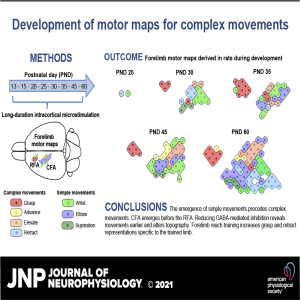
Wednesday Mar 03, 2021
Development and plasticity of complex movement representations
Wednesday Mar 03, 2021
Wednesday Mar 03, 2021
The topographic organization of skilled movements seem to be particularly plastic. The author describes how they addressed this issue in their study, and what methods they used. The motor cortex is topographically organized into maps of different body parts. We used to think that the function of motor cortex was to drive individual muscles, but more recently we have learned that it is also organized to make complex movements. In this podcast Prof. Cam Teskey of the University of Calgary discuses in detail the emergence and topography of complex movement representation, as well as their plasticity during development.
#neuroscience #JNPPodcastSeries
https://doi.org/10.1152/jn.00531.2020

